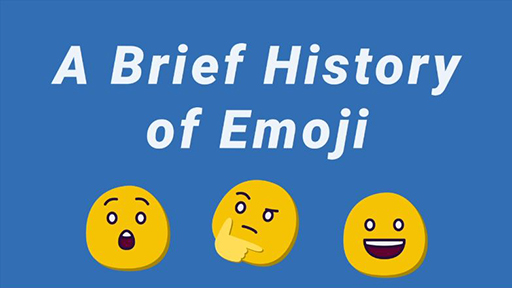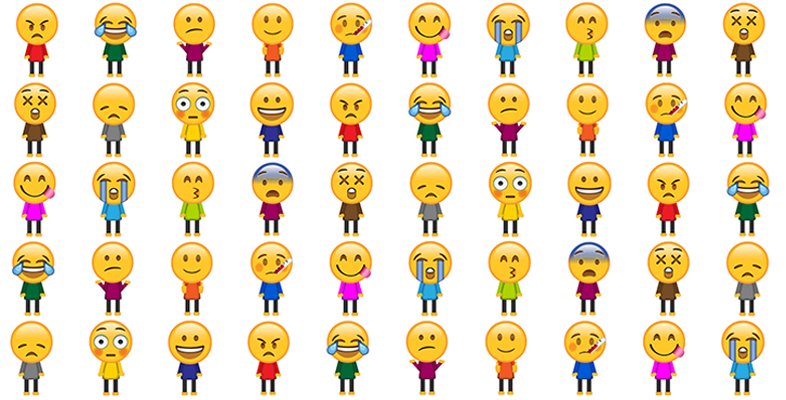2 A brief history of writing
Before we begin examining in detail at how writing arose and the impact it has had on human communication, take a look at the following short video. Video 1 gives a succinct overview of the topics we’ll be covering in this course by reflecting back at the history of writing from the perspective of today’s obsession with emojis. While you’re watching, consider how a modern day writing system such as emojis shares several elements with other, earlier writing systems – but how it also has its own unique properties which make it perfectly suited to modern communication technologies.

Transcript: Video 1 A brief history of emojis
A brief History of Emoji. With over six billion sent everyday, emoji have gone truly global in the last few years, but where did they come from and how on earth did we ever manage to communicate effectively in the pre-emoji era?
Language first evolved around 100,000 years ago, allowing our ancestors to communicate simple ideas like 'fire' or 'cave' or more complex ideas like 'your cave is on fire'. About five and a half thousand years ago writing was invented in Mesopotamia, when people started engraving symbols on clay tablets. This marked a major step forward for civilisation, although wasn't entirely practical for sending love letters. At the same time, in Egypt people began scratching small pictures and symbols onto bone and ivory.
5,000 years later, Johannes Gutenberg invented the printing press, ensuring people could mass produced documents and share radical ideas like Protestantism and the recipe for Auntie Susan's vegetable broth. In the 19th century the telegraph was invented which led to an increase in long-distance communication, as well as cases of repetitive strain injury. In the late 20th century the combination of the internet and mobile phone gave birth to the video call. So now you have to look ill as well as sound ill when you pull a sickie. All of which finally bring us to the birth of emoji, so what exactly are emoji?
